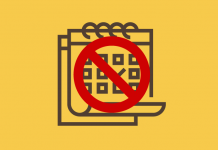
We spend a lot of time talking about schedule compliance, but that conversation is usually restricted to how well agents adhere to their own schedules, how to encourage agents to show up on time and stick to their schedules, and how best to reward them when they actually work their assigned schedules. We work hard to come up with schedules that will meet call center goals while matching the agents’ preferences, but there’s another layer to schedule compliance and that is making sure the scheduling rules are in line with state laws and company policy.
The responsibility of work shift compliance fits well in the WFMer role because we have so much control over the type of schedules we create. Immediately after generating the forecast, we know the required staff for each interval. Prior to assigning schedules, there are some intermediate steps you can take to ensure that your schedules are not just desirable and realistic, but also adhere to local labor regulations.
Every state has different rules about what schedules I can ask people to work. They are there to keep employees safe and to ensure that fair labor practices are in place. For example, in some states, local labor laws require employees receive at least eight hours between ending a shift and starting their next shift. This allows a decent rest period so employees don’t have to drive without the proper amount sleep.
Ensuring that Corporate Policies Comply with State Laws
In addition to the necessary state laws, your company may also have certain scheduling policies that you must follow. For example, employees may be entitled to paid time off earned each month in increments, but if they don’t take it by the end of the calendar/fiscal period, they lose it, which could snowball for the unprepared workforce manager who reacts instead of plans. Vacations, sick time, and holiday pay are a matter of agreement between an employer and an employee, not a guaranteed benefit.
Paid & Unpaid Breaks
Breaks are a good example of a compliance issue dictated by state laws but also linked to internal policies. Employees’ have very different preferences about when their break occur. Some like to combine their breaks with their lunch period, making it possible to physically escape the building; others like to have a traditional morning and afternoon break to regroup; and some would rather skip their breaks altogether and leave 15 minutes early every day.
If you have an optimized, flexible schedule environment that is preference-based and monitored in real-time, you can probably juggle these break choices in a way that is best for your business and best for your employees; however, the key to making it compliant is making sure rules and the favors for every employee is consistent with everyone else’s. When comparing schedule spans, also compare that across other groups in the company because nothing bites worse than finding out they pay you 40 hours of salary for 40 hours of working time, while the person across the hall gets 40 hours for 37.5 hours of time.
Editor’s note: This post is an excerpt from Tiffany LaReau’s ebook, Diary of a Workforce Manager, a comprehensive WFM guide told through LaReau’s experiences, trials and errors during her 30+ years as a WFM consultant. Download your copy today!




